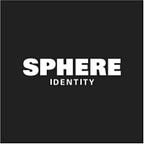Mapping the Identity Gap
Each year, the World Bank publishes ‘Identification for Development’, a comprehensive worldwide index on the number of people without identities. In 2018, this estimated number was 987,030,770, nearly one billion people. Here are some of the highlights of ID4D but first a short quiz on the global identity status.
- Large populations lack identity in every region
The absence of personal identification is a felt reality across the world, but particularly in Sub-Saharan Africa. With an unregistered population of 490 million, identity remains out of reach for half of the region’s one billion people. Europe & Central Asia have the lowest number of persons without legal identities — and it’s still a group that’s 10 million strong.
2. Identity is a problem, both in terms of population and percentage
Over half the planet’s people without identity live in India, Nigeria, Pakistan, Ethiopia and Bangladesh. However, in terms of percentages, most of these countries don’t feature on the Top 10 list. For example, India has 160 million unregistered individuals, which accounts for a relatively low 12%.
3. Several nations have an unregistered population of at least 20%
For 65 countries in the world, 20% (or more) of their entire population get by without any form of identification.
49 among these are either low or lower-middle-income countries. Saudi Arabia is the first high-income country on the World Bank index. It ranks at 5, with 60% of its population without any kind of identification.
4. Over 90% of people without identity are classified under low or lower-middle-income categories
In a general sense, lower-income groups lack access to essential services and opportunities for development. In relation to identity as well, these subsets of the global society are evidently disadvantaged. Over time and through generations, living without identity can become the way of life.
However, there are groups across geographies and the income spectrum where identity provision has significant room for improvement. In the Middle East and North Africa, 46% of the regional population devoid of identity belong to upper-middle and high-income groups.
Identity provides the shortest path for individuals to build trust. Making identity available to those who have never had it is challenging, but worthwhile.
Societal development depends on the growth of trust between individuals and groups. A big part of gaining this trust is by acquiring the full consent of all parties involved in the interaction.
Working groups such as the Kantara Initiative develop standards for genuine consent in data sharing. Self-sovereign identity solutions provide frameworks for organisations to nurture open and informed relationships with users.
Organisations must prioritise user consent when offering identity technology to those with no previous exposure. Through it, trust thrives and the vision of a fair, technologically-advanced economy can be realised.
